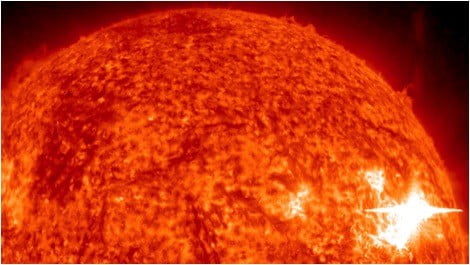Scientists using data from NASA’s MESSENGER spacecraft have discovered part of the outer layer of the Sun that is sending out modestly energetic subatomic particles called fast neutrons.
MESSENGER’s close proximity to the Sun – the spacecraft orbits Mercury at a distance as close as 28 million miles from the Sun, compared to Earth’s 93 million miles – allowed instruments to detect solar neutrons as they flowed past Mercury into space, according to a paper in Journal of Geophysical Research: Space Physics.
“The observation of solar neutrons made using MESSENGER’s neutron spectrometer could not have been made near Earth because they decay before they get here,” said PSI Senior Scientist and co-author William Feldman, the MESSENGER mission Co-Investigator responsible for the neutron spectrometer. “However, this is not true for an orbit around Mercury, which is about three times closer to the Sun than is the Earth.”
These neutrons form an exosphere above the corona that decay to a large swarm of equally energetic protons that in turn, expand along the magnetic field that is carried by the expanding solar atmosphere into interplanetary space, said Feldman.
Above, a solar flare erupted on the far side of the sun on June 4, 2011, and sent solar neutrons out into space. Solar neutrons don’t last long enough to make it to Earth, but NASA’s MESSENGER spacecraft, orbiting around Mercury, was able to observe them, offering a new technique to study these giant explosions.

